In This Issue
The opinions, beliefs and viewpoints expressed in this publication are those of the authors. They do not necessarily reflect the opinions, beliefs, viewpoints or official policies of Autism Society Alberta.
|
|
|
Face to Face at Last
Kitty Parlby
Perhaps you’ve been supported by one of our team, or maybe you haven’t reached out yet. In either case, what you may not know is that the team members who represent our pan-disability Family Resource Centres live in many locations throughout the province. This has necessitated that we communicate by phone, email, messaging, and virtual meetings.
But on September 20th something wonderful happened… We had our very first in-person planning day! As our team has grown, we have worked together for anywhere from 1 year to 2 ½ years. How amazing it was to be physically together in the same place. For the first time, we could see each other’s body language as we spoke; we could give a hug, or shake a hand. This opportunity to deepen our connection as a team and get to know each other better was priceless.
We did many activities together. Here are a few:
- Visioning on how to improve our reach and support
- Learning about self-care
- Team-building/communication exercises
- Learning more about Down Syndrome (a speaker joined us virtually)
- Discussed team training we could take in the future
- Yoga session
This event took place in Calgary. Some drove there, others took a flight. The yoga session, as well as the self-care presentation (done by our very own Amanda from Ft. McMurray), were both great ways to remind us that if we don’t take care of ourselves, we can’t fully be there for the families and individuals we support. I offered the team zucchini from my garden, and brought some big ones with me for those who were interested; you can’t do that virtually! Lorraine kindly brought us welcome bags from Crowsnest Pass.
We are feeling reinvigorated and renewed with fresh ideas, and our team connection is stronger than ever. All the better to serve you when you need us!
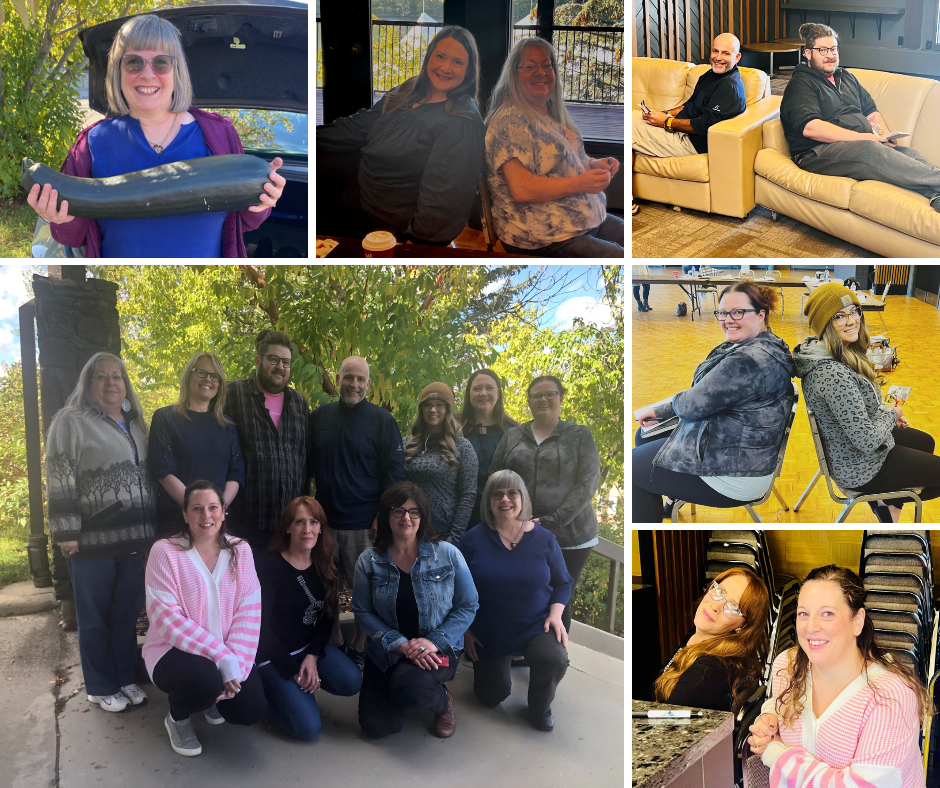
Kitty Parlby is the mother of an autistic young adult, and a former special needs Educational Assistant, speaker, and consultant. Currently, her position is Manager, Family Resource Coordinators, for Autism Society Alberta’s Family Resource Centres.
|
|
|
ASA is Hiring!
Exciting news; we're growing, again! This position can be done remotely from anywhere in Alberta. If interested, please send your cover letter and resume to hr@autismalberta.ca by Tuesday, October 18th at midnight MST.
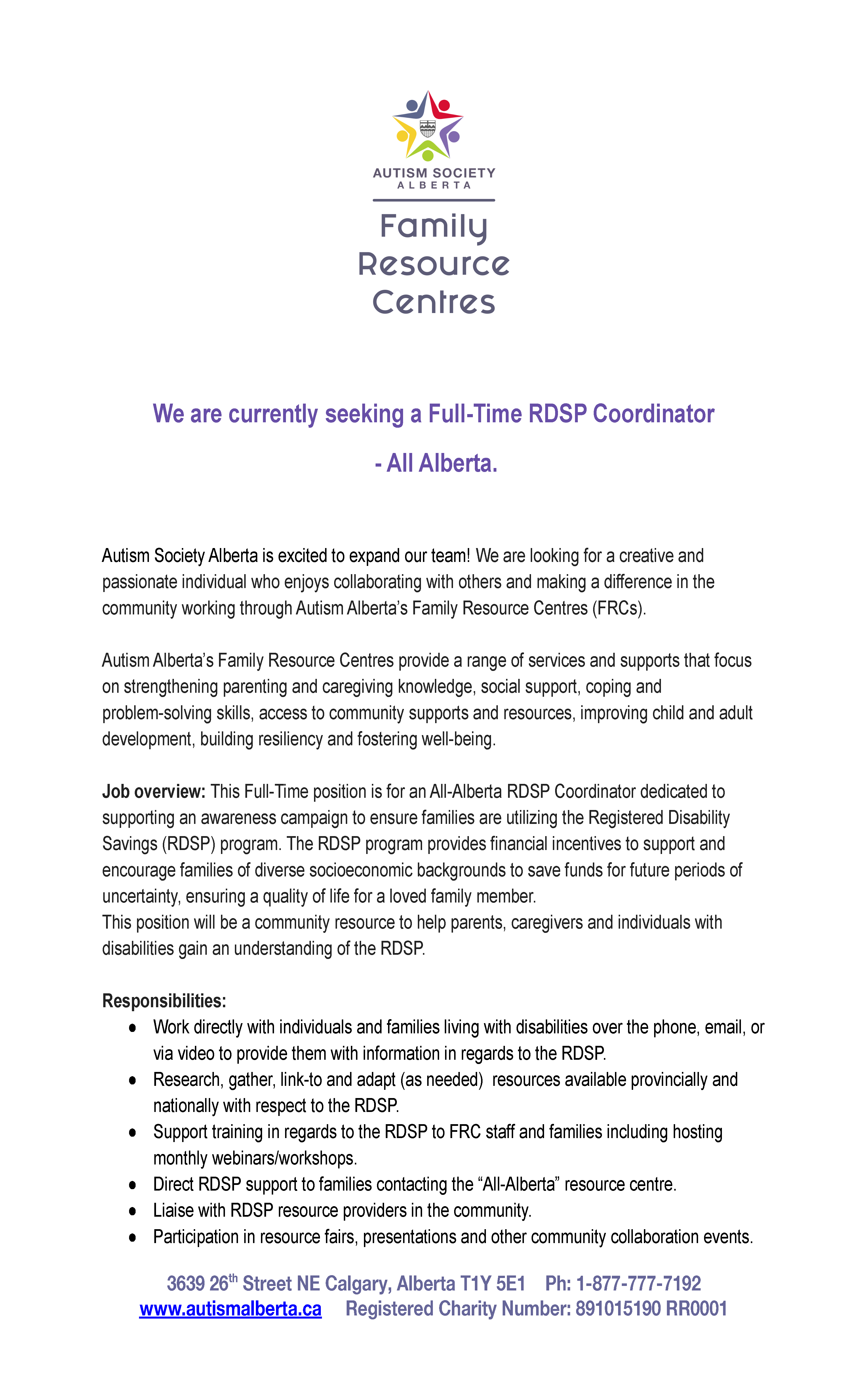
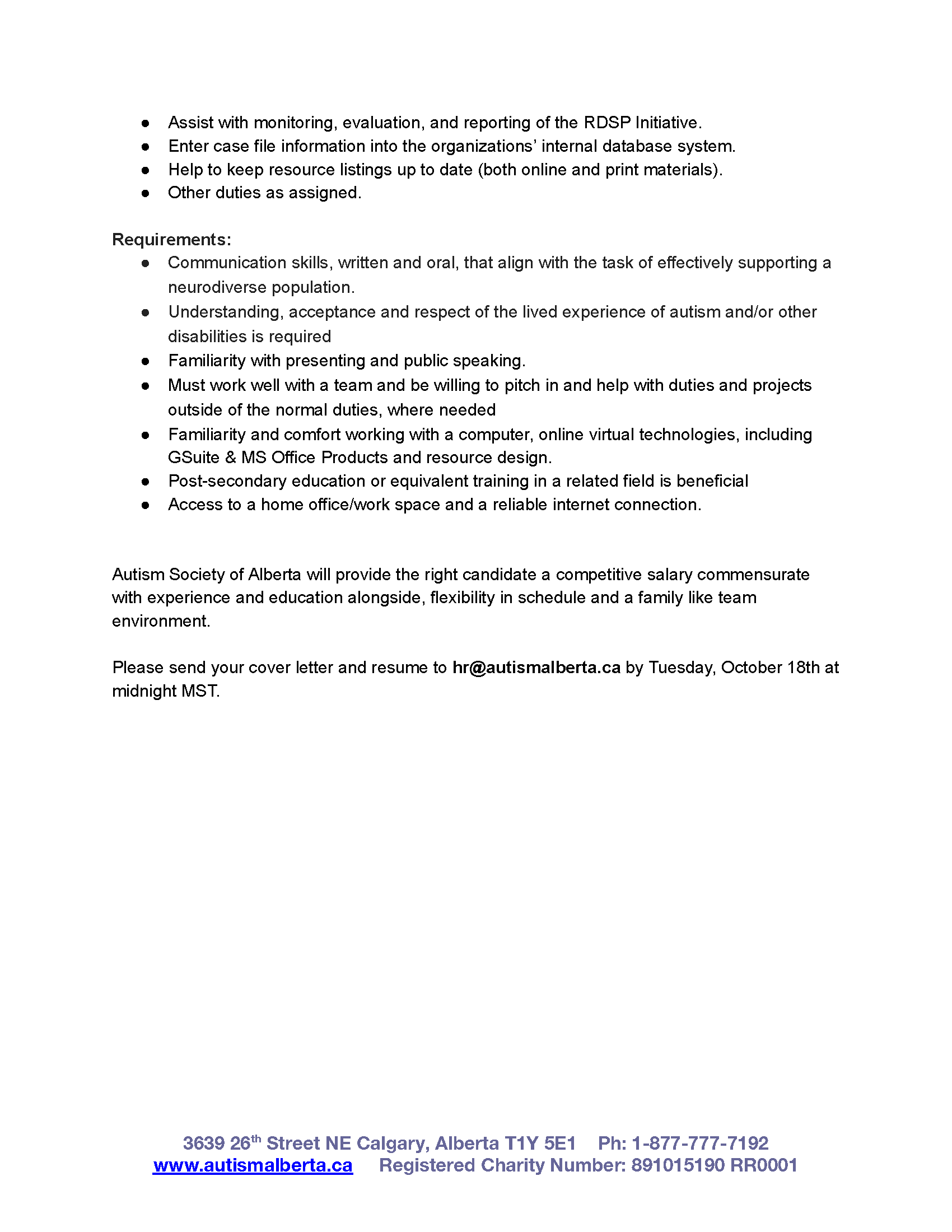
|
|
|
Autism Ontario Art Boxes
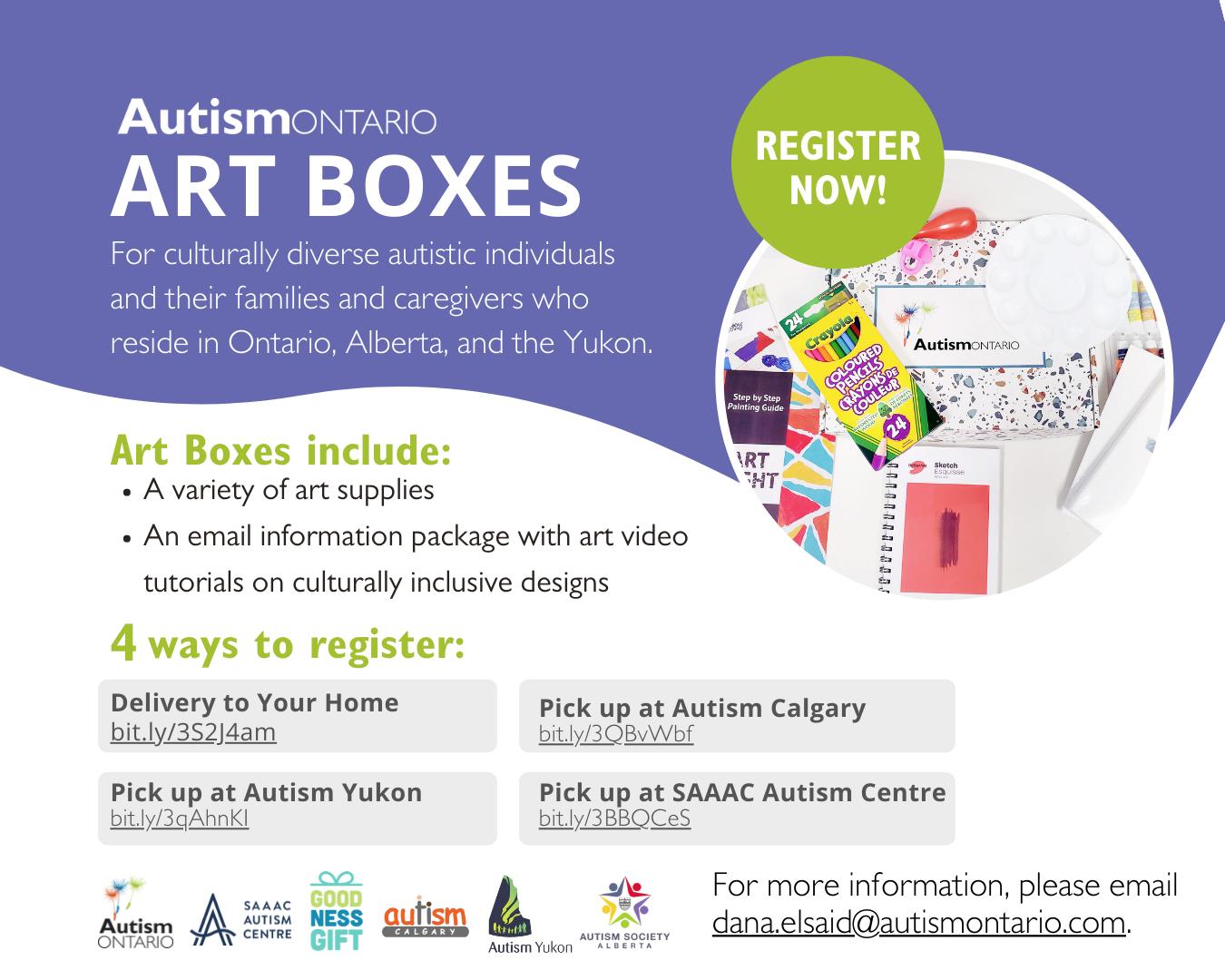
REGISTER NOW! Here at Autism Society Alberta, we have some exciting news to share! In partnership with Autism Ontario, we are launching the Art Box for culturally diverse autistic individuals, families and their caregivers who reside in Ontario, Alberta, and the Yukon. Register now to reserve your art box as spots are limited.
Delivery to your home: https://bit.ly/3S2J4am
Pick-up at Autism Yukon: https://bit.ly/3qAhnKI
Pick-up at Autism Calgary: https://bit.ly/3QBvWbf
Pick-up at SAAAC Autism Centre: https://bit.ly/3BBQCeS
|
|
|
Anxiety & Stress in Autism Spectrum Disorder
Nicole Burnett
We all experience anxiety in response to stressful situations. Anxiety is a normal biological response. But did you know that individuals with autism spectrum disorders are more prone to experiencing anxiety and anxiety-related illnesses than neurotypical individuals? Neurologically speaking, the part of the brain responsible for emotional and fear regulation is larger in ASD individuals, which can mean that anxiety and stress are experienced more frequently and to a greater intensity. According to the Canadian Mental Health Association (2022), individuals with ASD may have different ways of showing us that they are highly anxious and require help. For example, you may notice:
- avoidance and withdrawal from social situations
- an increased preference for rules and rigidity
- an increase in repetitive behaviours
- more frequent emotional outbursts
- unexpected behaviours
The response to anxiety will differ across individuals; these are only a few examples. There are also physiological symptoms that may point to feelings of anxiety. For example, the individual may report frequent headaches or gastrointestinal upset. They may be tense, have an increased heart rate, or have sweating. Irritability and insomnia are also signs of increased levels of stress and anxiety. example, the individual may report frequent headaches or gastrointestinal upset. They may be tense, have an increased heart rate, or have sweating. Irritability and insomnia are also signs of increased levels of stress and anxiety.
Coping with anxiety and stress may be a challenge for these individuals as well. Here are some factors to keep in mind that may make coping challenging:
- Difficulty with problem-solving – Individuals with ASD often have difficulty with problem-solving when they come across a situation that makes them feel uncomfortable. For example, the person may have difficulty deciding what to do, where to go, who to speak to, or what strategy to use.
- Difficulty with communication – The individual may have difficulty letting others know that they are anxious, or that the environment is challenging at that moment. This is not limited to nonverbal individuals. This type of communication has a social component, where interaction with another person may be necessary. Social communication may be a barrier to decreasing stress or removing oneself from a stressful environment.
- Difficulty with judgment – Making choices during a period of intense anxiety may be impaired, potentially putting the individual in an unsafe situation. Or judgment may be impaired because of the difficulty associated with problem-solving.
- Restricted range of interests or activities – Individuals with ASD often have specific activities they like to do when feeling anxious or stressed, to help them relax. When those activities are blocked or not readily available, it can increase their levels of anxiety.
- Sensory processing challenges – Certain environments may increase anxiety – for example, excessive noise, or crowds. When blended with communication challenges, these situations can also increase feelings of anxiety.
- Social understanding challenges – When interacting with others and trying to understand social nuances, conversations can become stressful. Interacting with others may not always be avoidable when entering a social environment, increasing feelings of anxiety.
What situations should be considered stressful? The answer is... it depends! It depends on the individual and the situation. Anxiety and stress are contextual, and triggers can vary depending on the day, who they are with, and other factors that may be present.
The following are some ideas for coping with anxiety and stress.
Relaxation techniques – When we are anxious, our body is gearing up for the fight or flight response. When this happens, using relaxation techniques can “trick” our bodies into reversing this response. Techniques can include:
- Progressive Relaxation – Sequentially going through the muscle groups in your body, tightening and relaxing them. This effectively activates the relaxation response in your body. This technique is often combined with deep breathing.
- Square Breathing – A deep breathing technique where you repeat this sequence: inhale, hold, exhale, hold to initiate the body’s relaxation response.
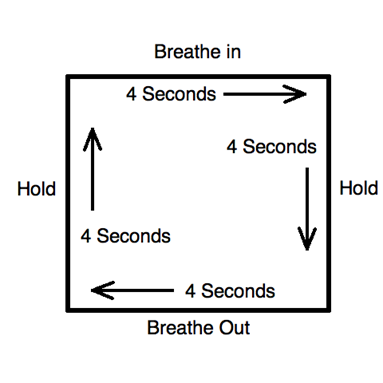
Taking a break – If the activity can be interrupted, provide a break away from the activity to help decrease anxiety. Do not return to the activity until the individual is feeling more relaxed and in control.
Sensory strategies – Managing unexpected sensory stimulation can be challenging, but being prepared can help ease some anxiety when these situations  do occur. For example, pack noise-cancelling headphones, plan trips and outings early in the morning or later in the evening to avoid crowds, and pack a favourite snack or a fidget as a distraction. do occur. For example, pack noise-cancelling headphones, plan trips and outings early in the morning or later in the evening to avoid crowds, and pack a favourite snack or a fidget as a distraction.
Allowing access to special interests – Special interests, topics, or objects may provide comfort for the individual. For example, if the individual really likes trains, perhaps allowing them to play with a train set, or watch videos of a train, can help them manage their anxiety and increase relaxation.
Role play – When going to a new place or entering a new situation, try “practicing” the situation at home. For example, when going to a new restaurant, look at the menu online, and practice ordering. This can help the individual know what to expect in the new situation.
Social stories – These are short stories written about a specific situation. The story describes the situation, who they can expect to see, and what to do. Social stories can also be designed to teach certain social skills.
Managing anxiety and stress is really a personalized experience. These are a few examples to get started, but what works can vary for everyone. Good luck!
Dr. Nicole Burnett is a cognitive scientist and psychology professor at Medicine Hat College
|
|
|
Autism Society of the RMWB

The Autism Society of the RMWB had a busy summer hosting our summer camp, Camp Kids First. Our summer program was able to host 80 participants this year. Camp participants got to experience events such as tours, boat rides, beach days, animal visits, and much more. We also kicked off our summer with a Santa Run. Participants got Santa suits and ran, walked, or rolled through the trails for either 5K or 1K. We have our adult programming running on Tuesdays from 12:00-2:00. Our most recent fundraiser was put on by a community group, The Chosen Breed. They held a poker run and raised $22,280.50 for our organization.
We recently partnered with Meticulon Assessment Services to offer an employment program. This program will help neurodiverse individuals be matched with employment opportunities that best meet their abilities. There is an online MAS tool that helps identify areas they excel in and areas they may need to work on. When an individual is hired, we also help support the employer.
We are kicking off Autism Awareness Month with our toonie swim at Macdonald Island pool on October 1st. We will be holding an information session for the community on Oct 12th from 1:00-2:30 with First Nations Health Consortium. We will also be planning our member Halloween event soon, so watch for more info about that!
For more information, call 587-452-9334, email AutismSupport@AutismRMWB.org, or check out our website, here.
|
|
|
A Massive Change
Brandon Rudics
Last month I wrote an article called “A New Discovery” for this newsletter, where I discussed some great benefits of starting a daily meditation routine. There is something else that has been a massive change in my life, with amazing benefits, that I want to share with you.
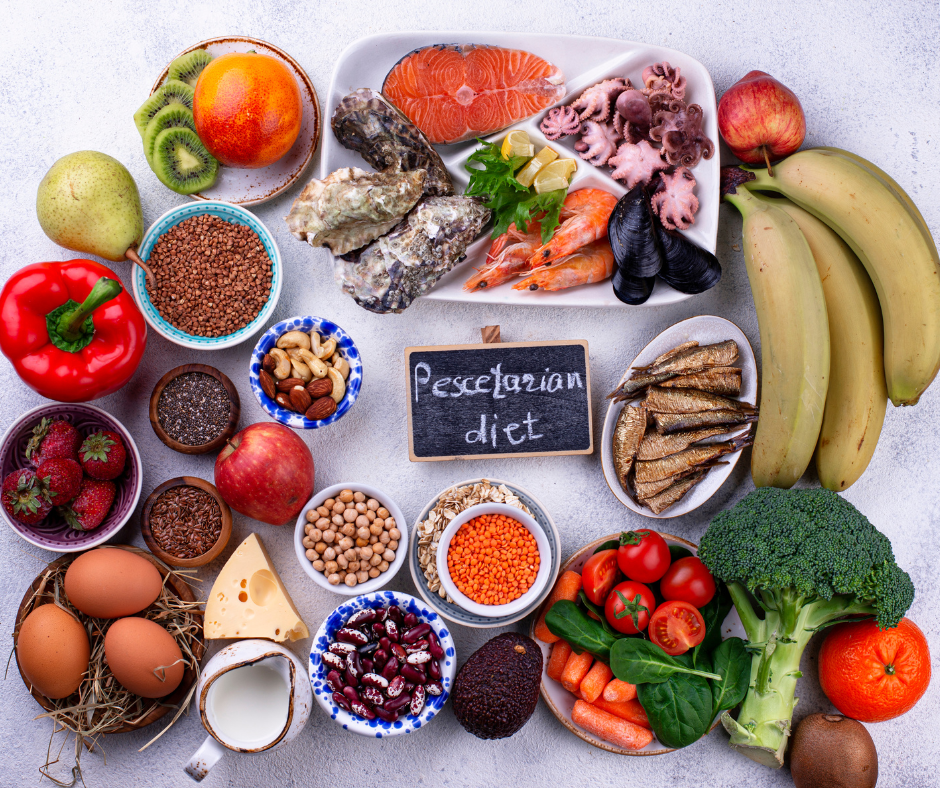 In April of this year, I had some health issues with my gut. Not pretty at all. I decided to try and cut out red meat from my diet, to see if that would help. I became a pescatarian (meaning you do not eat meat or poultry, but you do eat fish). Cutting out meat and poultry did help me, for sure, but I wanted to take it one step further. So, at the end of July, I decided I would give being a vegetarian a shot. In April of this year, I had some health issues with my gut. Not pretty at all. I decided to try and cut out red meat from my diet, to see if that would help. I became a pescatarian (meaning you do not eat meat or poultry, but you do eat fish). Cutting out meat and poultry did help me, for sure, but I wanted to take it one step further. So, at the end of July, I decided I would give being a vegetarian a shot.
Week one:
Starting out was pretty easy for me, as I had already cut out meat and poultry from my diet. Cutting out fish and seafood too was somewhat easy, even though I LOVE seafood. The biggest challenge was finding a way to replace protein and iron in my diet. After many trial and error meals, I landed on a good mixture of legumes (beans), nuts, and other things to replace the needed protein and iron in my system.
Week Two:
I thought I was doing great, feeling great, and ready to take on the world. Then days 10-13 came. Those days I felt like I hit a wall. I would literally be eating steak and lobster in my dreams. I felt lethargic on day 10. No energy and just an overall not-good feeling. I was wondering if this is how it always is. I came close to giving up a few times, but knew I could get through this and feel much better on the other side. After not giving in to my temptations, and remaining strong, I made it to day 14, and that was my best day yet! After those few days passed, I felt a new invigoration in my body. My belly felt tighter, I felt leaner, and I noticed a few pairs of pants getting bigger and bigger, I had to go buy a new belt even. I have to say that I am so proud of myself for getting through those few days of difficulty, and coming out even stronger after. It gives me the feeling that I can do anything I set my mind to.
As I am writing this, I am on day 18 and feeling fantastic. I have not eaten any meat or poultry in the last 4 months, and have been a strict vegetarian for those 18 days now. I am so proud of myself for sticking with it and taking my health into my own hands. I am actively getting healthier and healthier, and I did it all on my own. My family still eats meat. I even order it for them sometimes, and I have no desire or interest to eat any of it. Even the smell of a McDonald’s Big Mac and fries does not get to me. I am so proud of myself for that fact alone! hands. I am actively getting healthier and healthier, and I did it all on my own. My family still eats meat. I even order it for them sometimes, and I have no desire or interest to eat any of it. Even the smell of a McDonald’s Big Mac and fries does not get to me. I am so proud of myself for that fact alone!
Like I said in my previous article, I am not writing this to convince or convert anyone to be vegetarian, I am simply sharing my experience as an autistic and ADHD husband and father. I also want to note that at the same time I became a pescatarian, I also completely cut out pop from my diet. I was a pretty big pop drinker before, and knew that it was also not helping in my quest to get healthier. Cutting out all pop completely definitely aided in my journey to fix my diet and feel better about myself.
Thank you for reading this, and keep an eye out for follow-up articles about these latest journeys I have been going through!
|
|
|
Autistic Adult Virtual Support Group
We have free weekly virtual support meetings for AUTISTIC ADULTS, every Tuesday evening at 7:00 pm. They are run by our fabulous Autistic facilitators. The meetings are open to all Autistic adults, including those who think they may be on the autism spectrum but have not been formally diagnosed. You can sign up HERE to receive the weekly email notifications (the meeting link is provided in the emails).

|
|
|
The Wonderful World of AAC
Karla Power
Our family had an amazing experience a couple of weeks ago when we attended AAC Camp Alberta! The camp was supported by the March of Dimes, and run by the University of Alberta. AAC stands for Augmentative and Alternative Communication,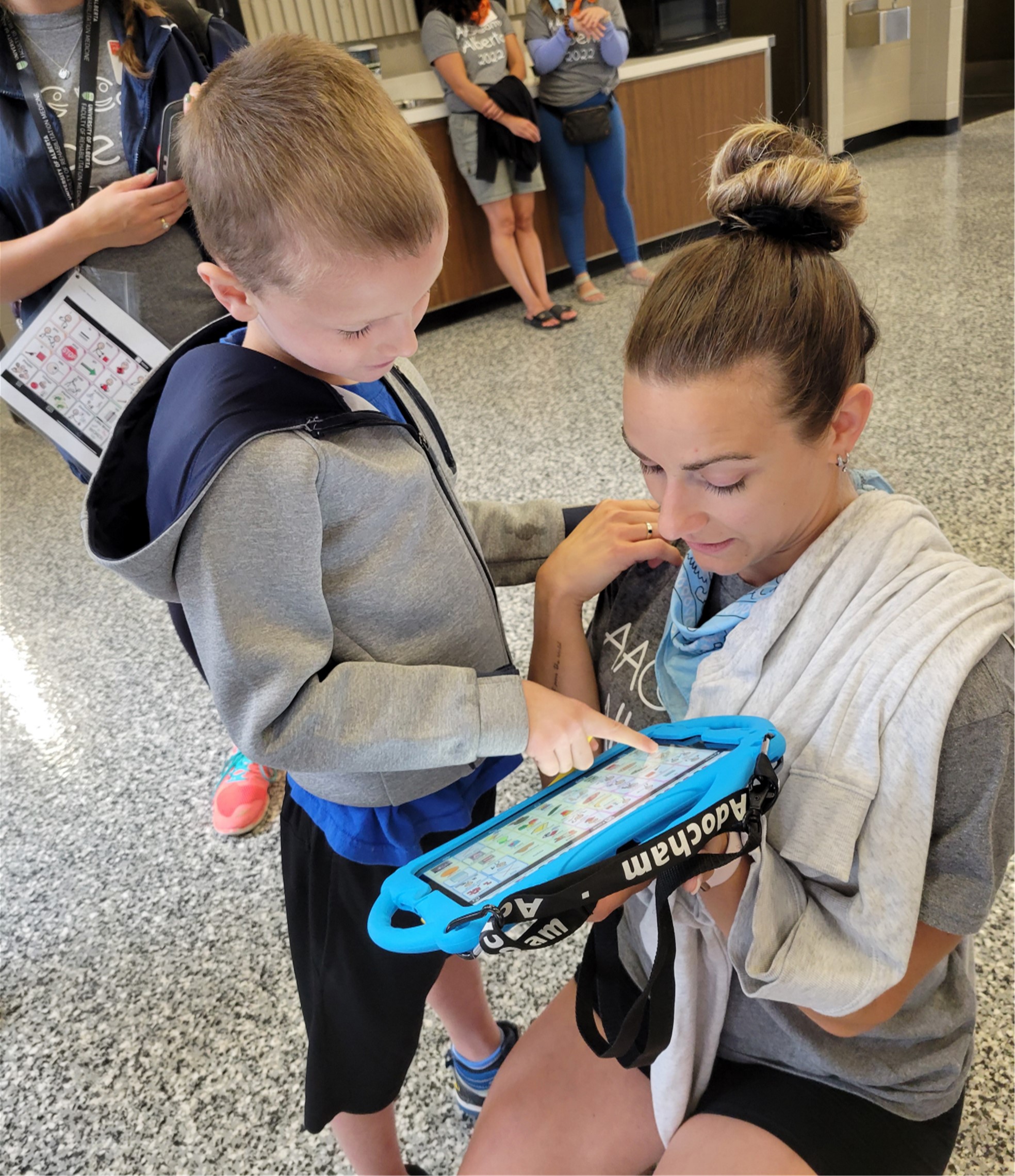 and is basically all of the ways that someone communicates besides talking. and is basically all of the ways that someone communicates besides talking.
Some examples are:
- ASL (American Sign Language)
- PECS (Picture Exchange Communication System)
- Core boards
- iPads with programs such as Proloquo2go
My overall impression of the camp was that it was very well organized! They planned a variety of activities and opportunities for communication. Each camper had a 1:1 counsellor who was a speech and language student at the University of Alberta. There were also occupational therapists, a physical therapist, and other support people to help with regulation, in order to foster communication. There were 27 campers with various levels of communication and different devices and programs.
The boys both thrived at camp! Kelton was given lots of opportunities to communicate his thoughts, feelings, and needs, and was engaged in many  activities. He especially loved arts and crafts, singing Baby Shark, and playing the chasing game with the “Stop” and “Go” buttons on his iPad. activities. He especially loved arts and crafts, singing Baby Shark, and playing the chasing game with the “Stop” and “Go” buttons on his iPad.
We were so impressed with how engaged Paddy was with communicating too! Although some of the activities didn’t appeal to him, he spent the majority of the weekend using either his device or someone else’s to communicate. It was amazing to watch! He even tried a few new activities, like paddle boating!
For me, the best part of the camp was that the adults were able to sit together and learn. This is not an opportunity that Frank and I have often had, especially when our kids are around. The counsellors were very good with the boys, and we didn’t have to help out too much, so we were able to learn lots!
The presenters were awesome! We found ourselves nodding in agreement and connecting with what the presenters were saying and also with the other parents around us. We also learned some new tips and tricks. Some of the takeaways that I gained are:
- There are lots of ways to communicate.
- Exposure to AAC encourages communication.
- It takes time to learn! (Don’t give up!)
- It is more meaningful to use the same format of communication; for example, if they are using a device, you should also use one to respond.
- That does not mean we don’t use our voice!
- There needs to be motivation for communication.
- Communication is not only about making requests and answering questions.
- Non-compliance is a social skill!
- People communicate more effectively when they are regulated.
Overall it was a great weekend, and what I considered a huge success! I am so glad we had this opportunity to attend camp with the boys! I can already see the gains they are making in communication, and how invaluable AAC is! We now have two boys who can tell us and others what they need, want, and even say “hello" and “I love you.” I am so grateful that my boys are able to have a voice, thanks to this amazing technology!
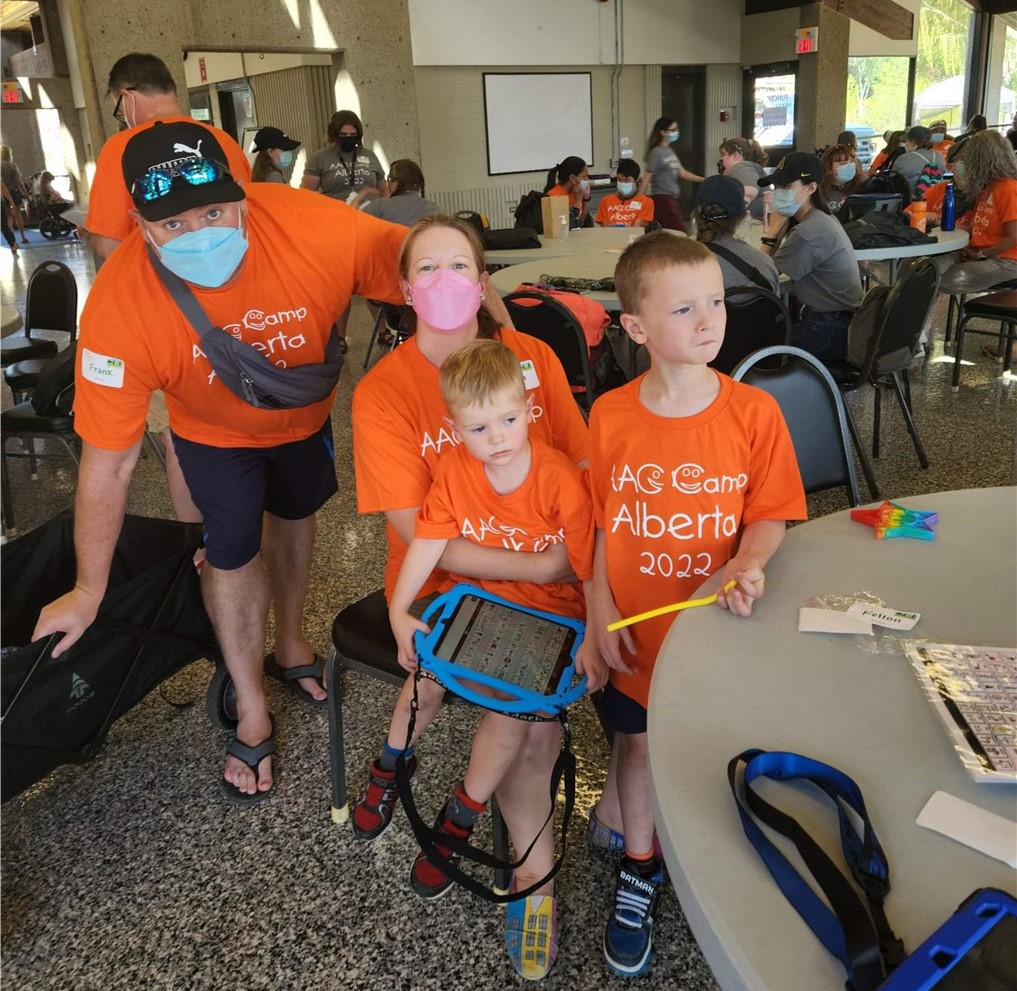
|
|
|
Centre for Autism Services Alberta
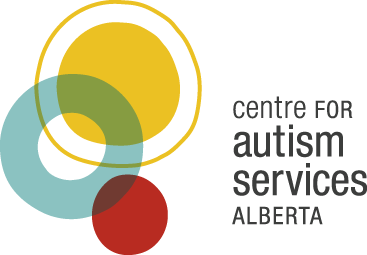
Happy Fall from the Centre for Autism Services Alberta!
The Centre has lots of exciting things going on this fall!
- We are accepting applications for Facing Your Fears for 2022. This program is for ages 8-14, and is designed for children on the autism spectrum who are having difficulties managing their anxiety. A well-developed caregiver education component is part of the program, allowing strategies learned in groups to be implemented at home.
- This 13-week program consists of 90-minute sessions, once per week
- Focuses on helping children and their caregivers identify worries, develop coping strategies, and practice managing anxiety with guidance from program facilitators
- Caregiver participation is required
- Delivered by a registered psychologist and occupational therapist
- Funding may be provided by FSCD
- For more information and to apply, please contact Anne Beattie at 780-488-6600 ext. 314, or email abeattie@centreforautismab.ca
- Athletic Programs at the Centre are BACK! We’ve got Basketballers (ages 6-12), Kickstart Soccer (ages 6-12), and Teen Basketball (ages 13-17)! All of these great programs teach important game skills like dribbling, passing, shooting, and defense, while at the same time teaching life skills like teamwork, gameplay, and how to be a good teammate. Participants can learn, make friends, and grow in a supportive environment. Registration is available on our website! The fall session for these programs runs from October 4 to November 22.
Visit https://centreforautism.ab.ca/programs/ and search for programs by age category and activity. Don’t delay – register today!
- PEERS for Teens is taking applications for fall 2022! PEERS is a world-renowned, evidence-based social skills program for teens on the autism spectrum. Developed by UCLA researchers, it is delivered by certified trainers in over 80 countries around the world, including at the Centre! And now with options for in-person (Edmonton) and digital delivery methods, this sought-after program is available Alberta-wide.
Teens will learn:
- How to enter and exit conversations
- How to choose appropriate friends
- How to handle teasing and bullying
- How to use electronic communication safely
- AND MORE!
- PLUS – parents will learn how to coach and support their teen
To learn more, visit our website here.
To apply for PEERS for teens, email us at teenandadult@centreforautismab.ca
|
|
|
An Introduction (Perhaps)
James Tworow
Just to introduce myself, as I’m relatively new to the world of Asperger’s/Autism: I am 50, was only formally diagnosed two years ago as HFA-1 (high-functioning autism, level 1), and self-diagnosed myself about five years ago. About eight years ago, a friend told me in conversation that he thought I might have Asperger’s, right in the middle of the weekly Hillhurst Flea Market here in Calgary. I did look it up that day, and thought just maybe… And I know Jack didn’t mean that comment in a negative way, just for the record.
I saw the Facebook post about writing articles for this newsletter and thought I’d give it a try. About 20 years ago, I did some writing for a car club, and since then, I haven’t done any articles, so I might be a little rusty. It’s already September 15th, and the deadline is in five days – eek! I've been in communication with the editor, I’m not even sure what to write about, but here goes. haven’t done any articles, so I might be a little rusty. It’s already September 15th, and the deadline is in five days – eek! I've been in communication with the editor, I’m not even sure what to write about, but here goes.
Like many older adults, they weren’t diagnosing mild autism when I was growing up, so if we get diagnosed at all, it will be later in life. And I actually think lots of other adults just haven’t bothered to get tested, or haven’t even thought about it.
As for myself, there were some early markers. I did a few interesting things as a child. At one point, I compiled hockey statistics based on what was printed weekly in the newspaper, not knowing that other, more professional people were doing the exact same thing. But I still enjoyed doing it. And possibly my first obsession, even as a child, was classic cars, despite my dad not being a car guy at all. I first started attending car shows when I was 29; that is another story. To this day, 21 years later, I still troll around local car shows with my camera. But sadly, I’ve never had the money to purchase my own classic car. It is something I’ve thought about, and made some vain attempts at.
The camera I mentioned above? I have actively been doing photography since 2004, 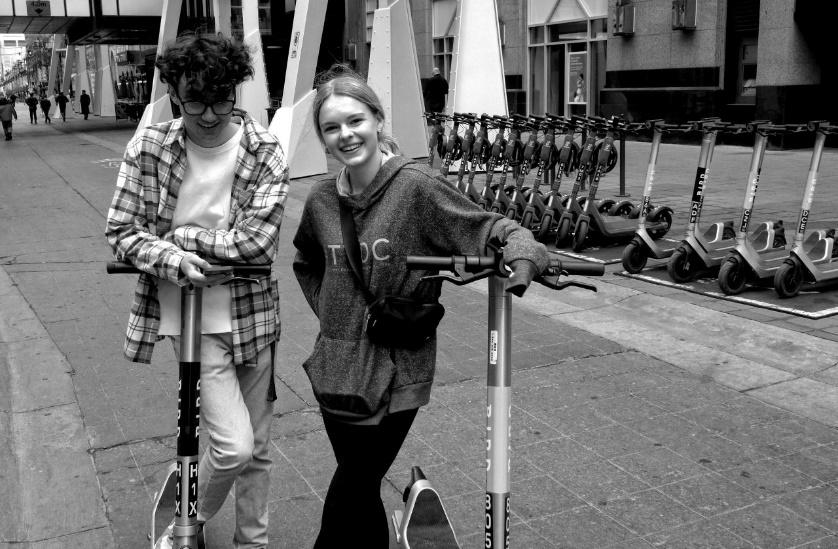 and doing street photography since 2005. For those who don’t know, street photography is photographing complete strangers as either a candid photo or a stranger portrait. I know this sounds so autistic. Many years later, I still spend much of my spare time in photographic pursuits. I do most of it in downtown and central Calgary, at car shows, of course, and I love exploring the prairie region on road trips. Nothing beats driving on empty prairie roads, exploring the scenery and the small towns. and doing street photography since 2005. For those who don’t know, street photography is photographing complete strangers as either a candid photo or a stranger portrait. I know this sounds so autistic. Many years later, I still spend much of my spare time in photographic pursuits. I do most of it in downtown and central Calgary, at car shows, of course, and I love exploring the prairie region on road trips. Nothing beats driving on empty prairie roads, exploring the scenery and the small towns.
As I became more aware of the tendencies of most autistic people after my diagnosis, I realized that what I do probably isn’t very typical. Yet I love stranger portraits - meeting new people, taking their portraits, and sometimes hearing an interesting story. I am a private person, but I know it’s the camera lens that acts as a buffer for me, perhaps the excuse, if you think of it that way. And I see no need to stop doing street photography after years of doing it prior to my diagnosis.
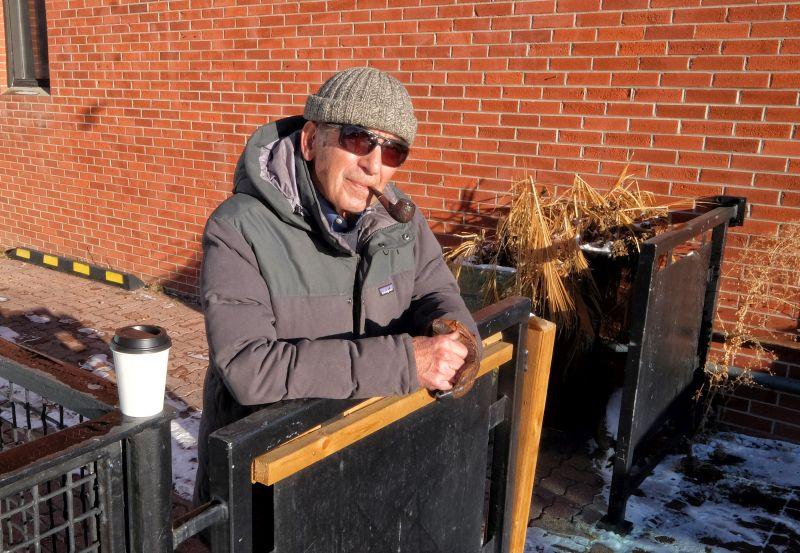
It’s now the night before the deadline, and I had a busy weekend. I went to some classic car stuff, a night market, and wandered through Hillhurst with a friend. I enjoy exploring the Calgary scene and tend to get cabin fever.
Do I sound very autistic?
But then we all have different experiences of it. Regarding photography, I have a very strong sense of observation. I think it’s almost heightened by being autistic. And it is my special interest, bordering on an obsession (in a good way, I think), as I spend lots and lots of time pursuing it. For me, it’s my way of exploring the world.
|
|
|
Children's Autism Services of Edmonton

Save the Date!
Children’s Autism Services of Edmonton is pleased to announce they will be hosting their 15th Annual Conference on January 26th & 27th, 2023. This hybrid event will have a number of live and virtual speakers. Attendees will have the opportunity to join the conference in person or virtually. Registration coming soon!
|
|
|
Two Sides to One Story
Carmen Moore
There is only so much that anyone can understand about another person’s situation. You can empathize with a friend, family member, colleague, etc. about their struggles or issues. You can study the parts of the situation intellectually, and try to apply logical solutions that have research behind them. You can be a supportive listener, and can do your best to put yourself in their shoes and be active in helping them. But you can never truly know how it feels to live their experience (and they can never truly know yours).
This life lesson hit home for me specifically after I spent many years as a teacher (grades 1-9 spanning my career), an inclusive education teacher, and years as  a school administrator as well. I would describe myself as caring and incredibly invested in the overall success of the school, but also in each student (and their families, ultimately). Most of my career was in relatively smaller schools, and there is a real sense of ‘family’ that is built and experienced by most, if not all. This was always a positive aspect, and I felt that people knew that I was authentically invested in their children’s success, and I would argue that to be true. a school administrator as well. I would describe myself as caring and incredibly invested in the overall success of the school, but also in each student (and their families, ultimately). Most of my career was in relatively smaller schools, and there is a real sense of ‘family’ that is built and experienced by most, if not all. This was always a positive aspect, and I felt that people knew that I was authentically invested in their children’s success, and I would argue that to be true.
As an educator, I had a special spot in my heart for any student that struggled in any way: behaviourally, academically, socially, emotionally, etc. I felt like I completely understood what their families were going through as I tried to support them through whatever challenges they faced. I thought that I had a full grasp of the feelings, effort, and worry that these parents were experiencing. They would sometimes allude to the fact that there was no way that I could, but appreciated my efforts and true concern. This would wound me a bit, I won’t lie. The old “You can’t possibly understand because you don’t have kids of your own,” would sting. I felt that was inaccurate, and did not take into account the many sleepless nights I had, trying to plan ways to better support their child.
Until I became a parent.
I hate to be told “I told you so…” but I can imagine that all of those wonderful parents would have the right to at least think it, even if they never said it to my face. I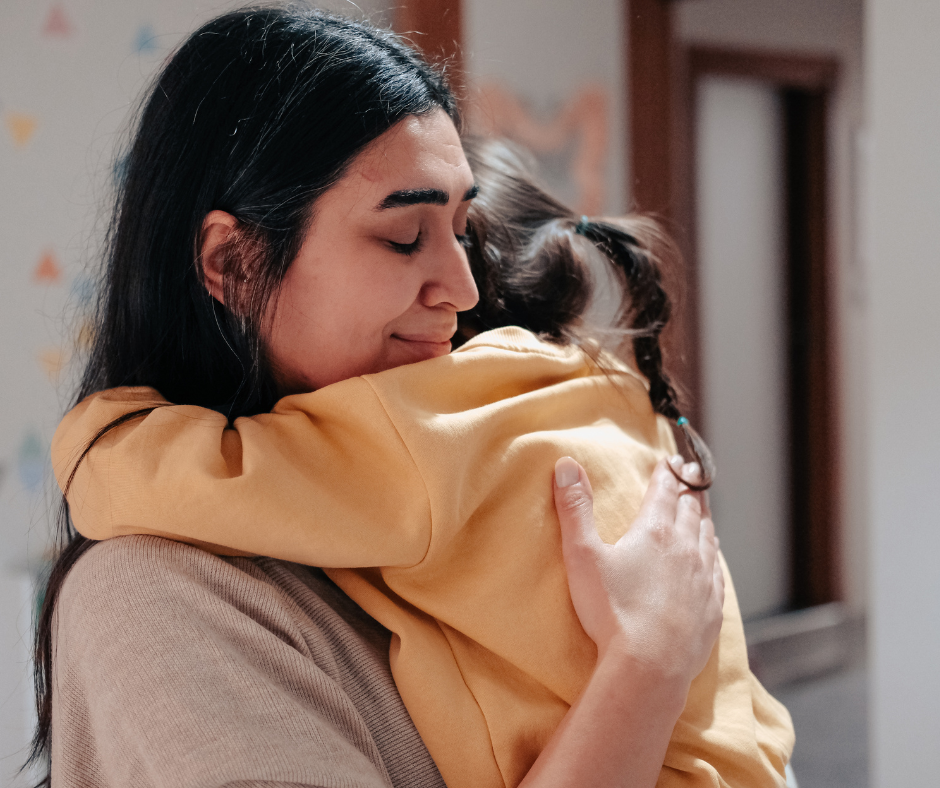 finally realized the true depths that parents could feel for their children, especially if they are struggling in any sense. Facing a long-term or more serious health concern for your child is not something that another person can fully grasp, no matter how much they do all of the incredibly kind things I mentioned at the top of the article. finally realized the true depths that parents could feel for their children, especially if they are struggling in any sense. Facing a long-term or more serious health concern for your child is not something that another person can fully grasp, no matter how much they do all of the incredibly kind things I mentioned at the top of the article.
This experience of having my own child with some struggles completely reframed the way that I approached education, meeting with parents, guiding staff in their classroom practice, communicating with parents, sharing reports, etc. I can see the times when I thought that what I was saying or doing was the most helpful thing at the time, but it may not have been. I thought it was, and had the best of intentions. But sometimes, I really needed to just ease up a bit, give a bit more time, gently nudge when needed, listen a bit more, slow down, and a ton of other examples I can remember.
I know that I cannot go back, but I can certainly move forward with this new insight and understanding. Although each person’s story and experience are different (and I know that I can never truly understand each person’s specific experiences fully), there are some common threads that I hear through personal friends, colleagues, research, social media posts, and family members, as well.

There is an old saying, “You do not know what you do not know,” and this has come to ring true for me. If you are a parent reading this, you know. I firmly believe that with a focus on building both communication and relationship, we can begin to build that common understanding. We may never have the experience of being truly understood, but having this new insight has helped to shape and hone my practice as a parent and as an educator. A healthy and honest home/school partnership can be one of the most important relationships that affect your child(ren) and their growth. That should remain the focus for all, no matter the side of the story you may be on at any given time.
|
|
|
Society for Treatment of Autism
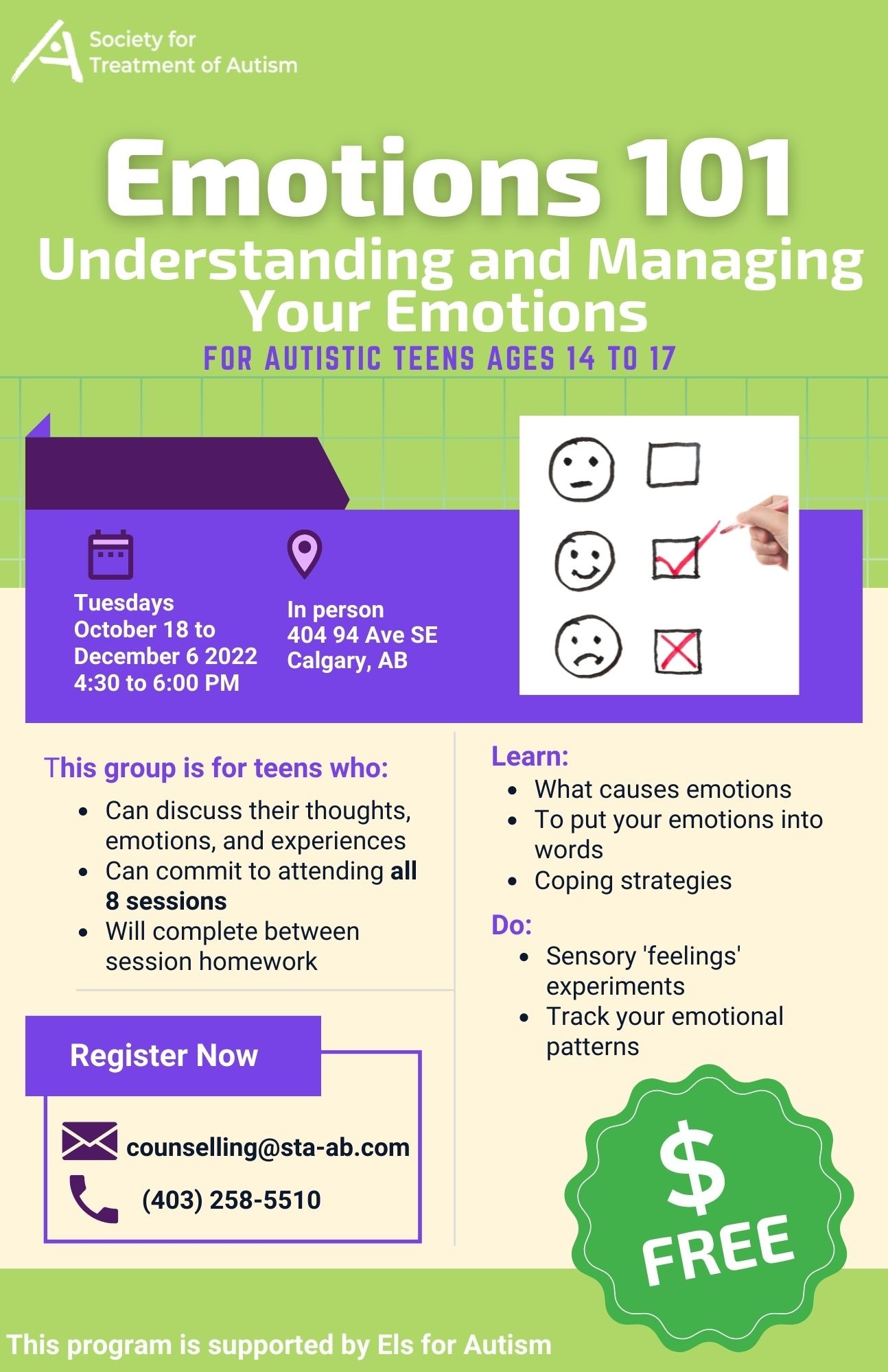
|
|
|
Autism, Atypical Eating Behaviours, and Eating Disorders
Maureen Bennie

From the Autism Awareness Centre Inc. Blog
Atypical eating behaviours are common in autistic people. According to a study by Mayes & Zickgraf, 2019, 70.4% of autistic children have atypical eating behaviours, as compared to 13.1% for other disorders and 4.8% for typical children. They found that only autistic children had pica or pocketed food. For 92% of autistic children, the most common preferred foods were grains and chicken, mainly nuggets. as compared to 13.1% for other disorders and 4.8% for typical children. They found that only autistic children had pica or pocketed food. For 92% of autistic children, the most common preferred foods were grains and chicken, mainly nuggets.
Autistic individuals may be very selective about what they will eat, and may be sensitive to textures, smells, and the look or sounds of certain foods. Some autistics may have misophonia, which is an extreme sensitivity to certain sounds such as chewing or slurping. Someone who finds such noises triggering may not be able to eat in a restaurant, or at the family table. The social aspects of eating, such as making small talk, and waiting for everyone to finish eating before leaving the table, may also present challenges.
Oral motor problems can make chewing and swallowing difficult. Shirley Sutton, a Canadian occupational therapist, wrote a great article entitled Oral Motor Fun, that addresses these issues. Once a child’s hyposensitivities or hypersensitivities are recognized, activities can be planned accordingly to help with oral motor challenges.
Up to 70 percent of autistic individuals have gastrointestinal (GI) abnormalities at some point during childhood or adolescence. They are also more likely to have constipation or chronic diarrhea than children who are not autistic. A 2013 study by the UC Davis MIND Institute led by Virginia Chaidez found that autistic children experience gastrointestinal (GI) upsets such as constipation, diarrhea, and sensitivity to foods six to eight times more often than children who are developing typically.
Because many of these symptoms and behaviours are commonly seen in people with eating disorders, researchers are trying to further understand the relationship and prevalence of autism in people with eating disorders (and vice versa), particularly in females, who have a higher rate of eating disorders and are often underdiagnosed with autism.
The most common eating disorders for autistic people are anorexia nervosa and avoidant/restrictive food intake disorder (ARFID). Let’s explore each of these in more detail.
Autism and Anorexia Nervosa
In 1983, Christopher Gillberg, professor of child and adolescent psychiatry at the University of Gothenburg in Sweden, first posed the question in the British Journal of Psychiatry: Could autism and anorexia nervosa share underlying causes? He asked this question because he observed similarities between the two disorders. Girls with anorexia and/or autism displayed greater inflexibility, social difficulties, lower empathy, and a greater tendency to systemize (create and follow rules) than other people. Other similarities observed were a strong interest in details and systems, a tendency to focus on themselves, and inflexible behaviours and attitudes.
The Brede et al. 2020 study found that 20-35% of women with anorexia met the  diagnostic criteria for autism, with many others exhibiting higher levels of symptoms characteristic of autism than the general population, without actually meeting the threshold for a diagnosis. diagnostic criteria for autism, with many others exhibiting higher levels of symptoms characteristic of autism than the general population, without actually meeting the threshold for a diagnosis.
Body image may be less of a concern for autistic people with anorexia, but restricting food intake may be used as a coping technique to mask emotions and anxiety. Repetitive behaviours can take the form of an intense interest, such as calorie counting or excessive exercising, which develops into anorexia over time.
Avoidant/restrictive food intake disorder (ARFID)
In the DSM-V, the definition of ARFID is an eating or feeding disorder, characterized by a persistent and disturbed pattern of feeding or eating, that leads to a failure to meet nutritional/energy needs. Like anorexia, a person restricts their food intake, but the intent or reason behind the restriction is different, in that people with ARFID do not restrict food to avoid weight gain/control their body shape/size.
ARFID is more commonly seen in children and adolescents, but adults can present with it too. ARFID is sometimes called ‘extreme picky eating’ and may be the most appropriate diagnosis for some autistic people who are underweight or have trouble eating.
Treatment and recovery from eating disorders for autistic people
Eating Disorders Victoria, Australia says:
Identifying the presence of autism can make treatment and recovery of the eating disorder more effective. Autistic people experiencing eating disorders may need access to a treatment plan that is not only aware of their autism but actively understands it and allows treatment to be responsive to the needs of the individual.
Standard eating disorder treatments tend not to accommodate the specific needs of autistic people. They may focus too heavily on weight or body image, involve overwhelming group settings, inpatient stays that disrupt routines, and the need for in-person visits to medical clinics that may be brightly lit, noisy, and unfamiliar. Treatments that require a person to make dramatic changes to their eating routines in a short period of time may also be ineffective for people with autism who simply require more time and a more gradual process of change. Autistic people may require fewer food choices and more clarification around rules and expectations in recovery.

Other aspects to understand about autism and eating difficulties
Interoception and internal body states:
Interoception is the 8th sense, which helps a person understand what is going on inside of the body, like hunger, thirst, feeling hot or cold, fatigue, or a full bladder. It also affects the ability to interpret emotions; butterflies in the stomach may not be felt as anxiety or nervousness. Not understanding this sense can make self-regulation a challenge, and can be a factor in eating difficulties. Autistic people may have trouble recognizing when they are hungry or full. Neither of my adult autistic children has ever told me they are thirsty or hungry. They have never gotten themselves a drink of water nor asked for one, so I send a water bottle with them to all activities and offer water throughout the day.
Occupational therapist Kelly Mahler is doing brilliant work on the topic of interoception and its connection to eating disorders. Her interview with autistic Kim Clairy, who is in eating disorder recovery, sheds light on the connection between dysregulation and not being able to eat. interoception and its connection to eating disorders. Her interview with autistic Kim Clairy, who is in eating disorder recovery, sheds light on the connection between dysregulation and not being able to eat.
Alexithymia:
A core feature of people with eating disorders is that they find it difficult to identify and cope with emotion. Alexithymia is common in autism. Not understanding emotions that are being felt and being unable to communicate feelings to others can make it hard for a person to soothe themselves or get support from others. This can increase the vulnerability to developing an eating disorder as a coping mechanism.
Routines and rituals around eating:
Autistic people like to have predictability in their day and environment; meals and snacks are no exception. The presentation of food may have to be a certain way. Eating can follow a rigid schedule. Foods may have to be prepared a certain way or have to be a particular brand. (We had this dilemma with Ragu plain pasta sauce, which was discontinued in August 2020).
My two children eat their lunch and dinner from a white bowl. Foods can’t be mixed together, but have to be presented beside each other, though they can be touching. Snack time is at 4 pm and consists of pretzels for my daughter and plain popcorn with water to drink for my son. Both have improved a lot with trying new foods, but for years their diet was the same ten foods or less. My daughter recently added fruit to her diet in January 2022 after being told by her doctor that she had low blood pressure. She thought that eating fruit might improve that.
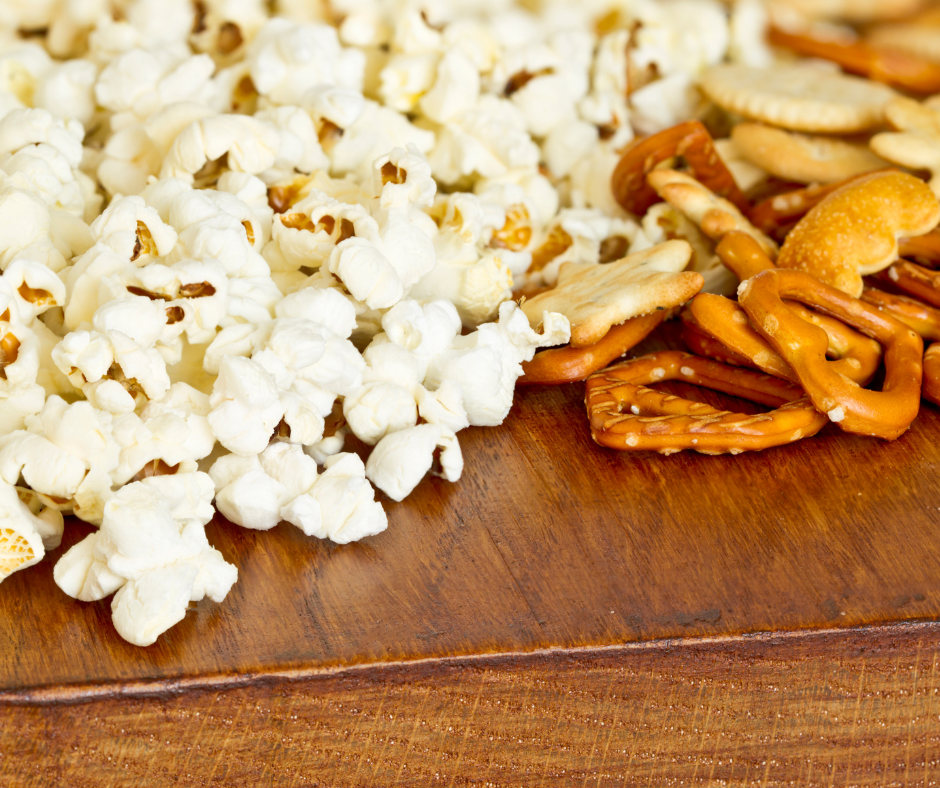
If you are looking for more ideas on how to expand a limited diet, check out my blog post on this topic. If you have concerns about an autistic person’s eating and nutrition, please seek professional help. If the individual has an eating disorder, they will require an individualized treatment plan prepared by a trained professional.
|
|
|
Sinneave Family Foundation
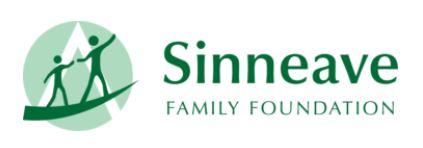
This October… Celebrate Disability Employment Awareness Month with Us!
Check out these presentations:
Creating an Inclusive Workplace Together
Thursday, October 6, 2022, from 1:00 – 2:30 p.m. Virtual/Online
In this informative, 90-minute presentation, a panel of guest speakers will share a unified approach to creating inclusive workplaces that look at the actions and responsibilities of both employee and employer. This free, online event is hosted in partnership with AIDE Canada. You can register for this presentation by clicking here.
Worktopia Connects 2022 – Neurodiversity in the Workplace: Ask, Listen and Act
Thursday, Oct. 20 from 9 a.m. – 12 noon. Virtual, or in-person at the Calgary Marriot Downtown Hotel.
There is growing interest in embracing neurodiversity in the workplace as a competitive advantage. More and more, employers are seeking advice and strategies to help them do so. We’ve learned that what helps autistic employees to succeed is when employers ‘Ask, Listen and Act’. Let us show you how! This half-day event features presentations and dialogue focused on changing the odds of employment success for people on the autism spectrum. This event is free; however, attendance is limited and registration in advance is required. In-person attendees will also receive breakfast. You can register for Worktopia Connects 2022 by clicking here.
If you want to know how to make your workplace more welcoming and inclusive, we can help!
Email us at info@sinneavefoundation.org for more information.
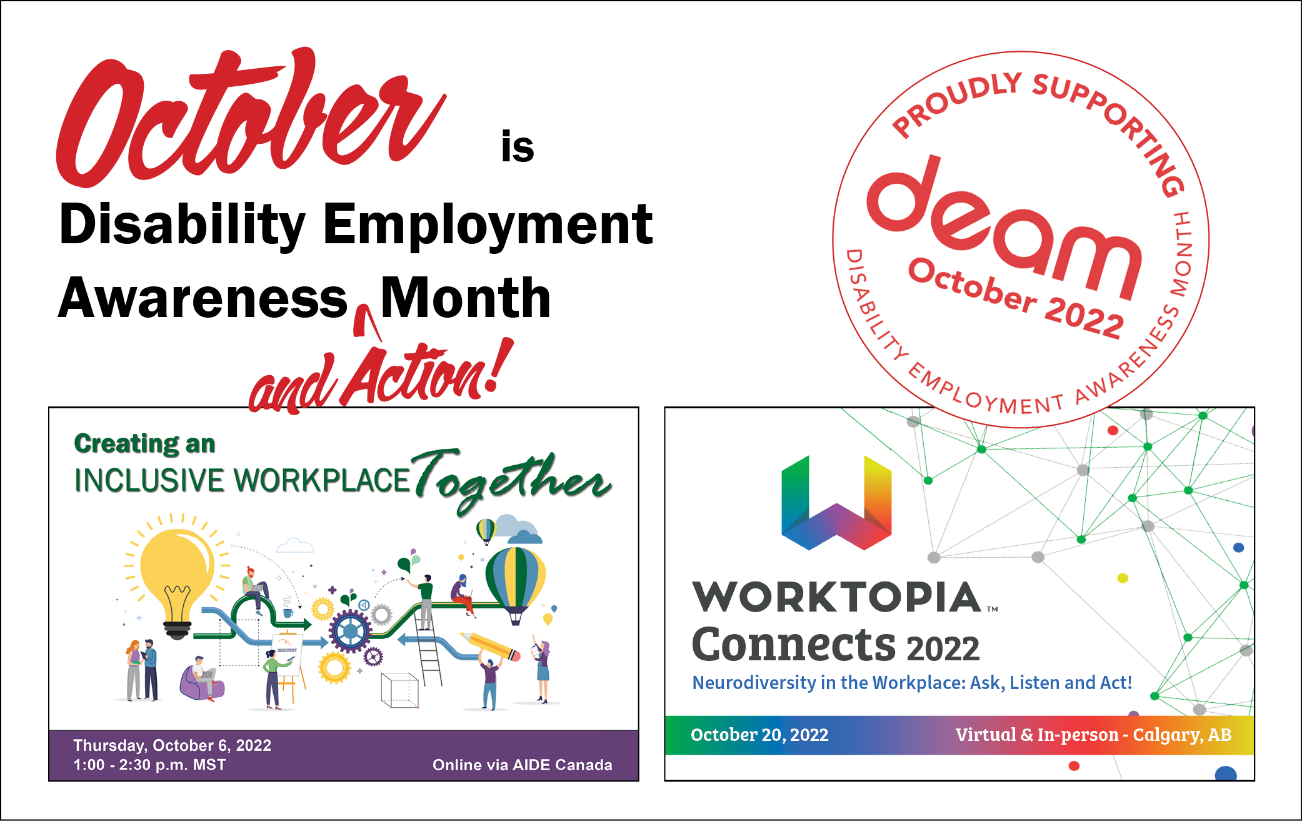
|
|
|
Meet ASA's Family Resource Coordinators
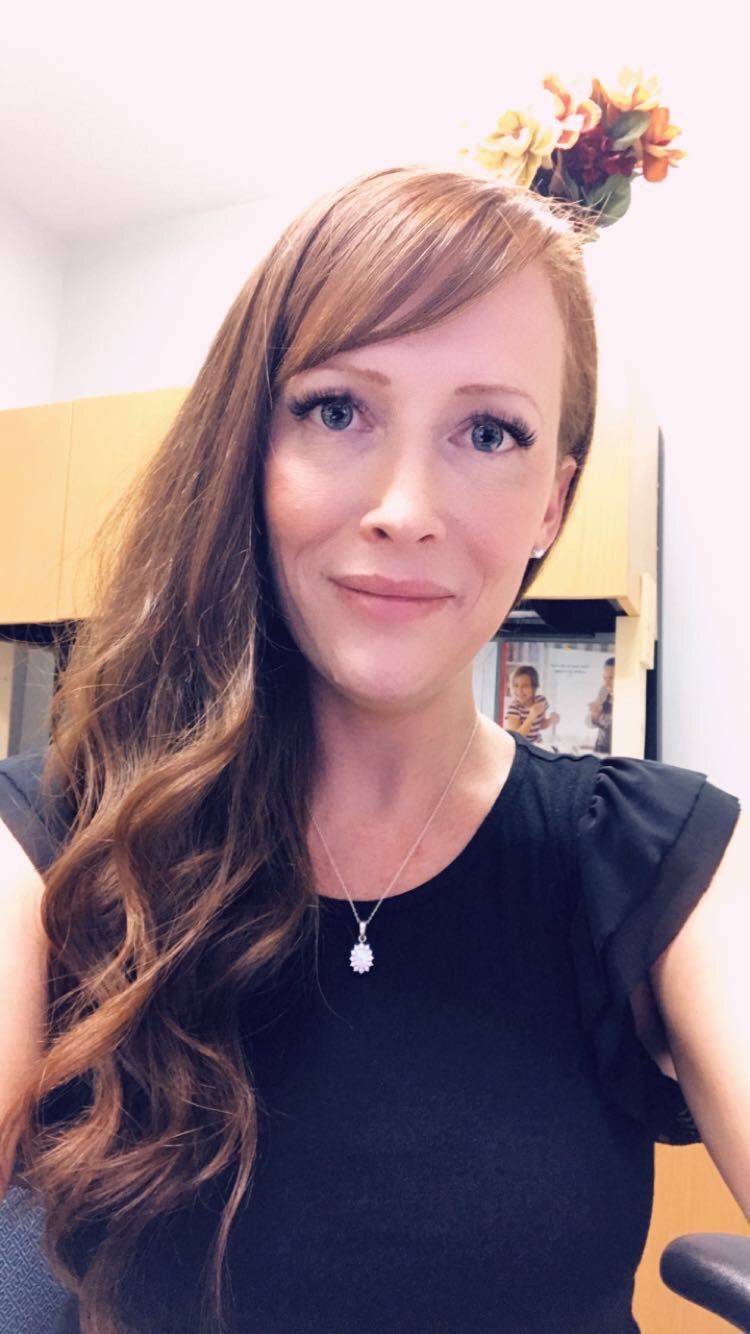
My name is Chantal Gaebel and I'm one of two Family Resource Coordinators in Lethbridge. I'm married to my amazing husband Ty, and we have four children, Rylee, Brody, Dane, and Nixon. We also have three dogs! I have worked in the disability service sector for 20 years, and in that time I have gained valuable knowledge regarding resources available in the Lethbridge area. I am passionate about having the opportunity to help families and caregivers make informed choices for their loved ones with disabilities. Outside of busy family life and work I love to make novelty cakes.
You can contact me at chantalg@autismalberta.ca
|
|
|
|
|